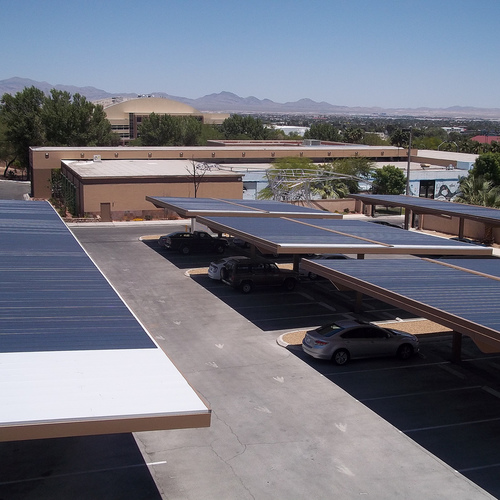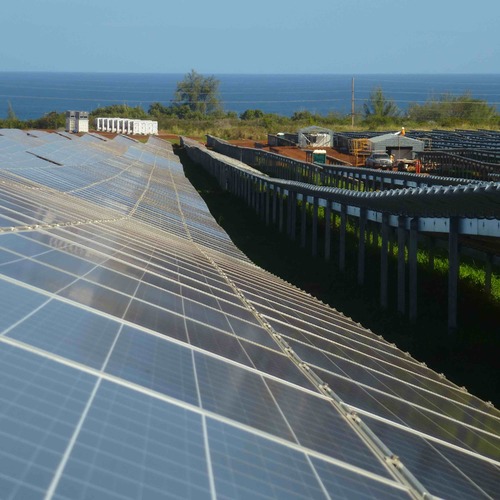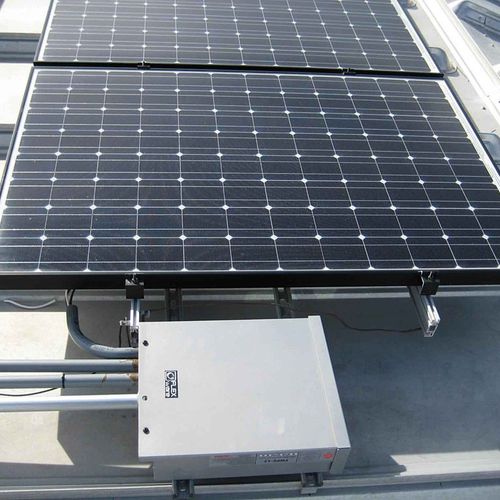
Image Credit: National Renewable Energy Laboratory
Hawaii closes door on net metering
Hawaiians who were hoping to take advantage of full retail net-metering with a new solar system have missed the boat.
The state’s Public Utilities Commission has put a halt to new net-energy metering contracts, leaving in place existing deals for the life of their contracts but offering reduced rates for new photovoltaic (PV) systems, UtilityDive reports.
Along with new reimbursement rates, the commission also approved new standards for interconnecting PV systems, plus a minimum monthly bill of $25 for residential solar customers. The commission said that the order was an “evolution” that would help to advance distributed generation in the state, but solar advocates were dismayed.
“The PUC’s decision is neither fair nor justified,” Bryan Miller, a spokesman for the Alliance for Solar Choice, told Pacific Business News. “Contrary to a law passed by the Hawaii Legislature two years ago, the PUC failed to conduct a cost-benefit analysis to determine the value of solar on the grid. Instead, the PUC relied upon speculation by the utility and ended net metering without notice to consumers.”
One co-op director said that the move was “like an earthquake in Hawaii solar.”
Hawaii’s high electricity rates — more than 30 cents per kilowatt hour for homeowners this past July — plus falling prices for modules “have combined to transform the competitive landscape” facing the state’s utilities, the commission wrote. Net-metered systems have increased to more than 60 times the original cap set in 1996 legislation, and the program now runs at between 30% and 55% of the system’s peak load, depending on the individual utility.
In place of net-energy metering, the commission adopted two new types of credits. A “grid-supply option” replaces retail rate credits with a tariff based on avoided costs — between 15 and 17 cents per kWh. The “self-supply option” is primarily for solar owners who don’t export the power they generate to the grid, UtilityDive said.
Massachusetts wins energy efficiency title
Massachusetts once again sits atop a state-by-state energy scorecard released annually by the American Council for an Energy-Efficient Economy. California was a close second.
It’s the fifth consecutive year the Bay State has finished the year at the top of the list, based on its commitment to energy efficiency under its Green Communities Act, the ACEEE said in a press release. Thanks to requirements for reduced greenhouse gas emissions, new efficiency measures for schools and a cap-and-trade program, California closed in on Massachusetts and ended up just a half-point behind.
The rest of the top 10 included (in order) Vermont, Rhode Island, Oregon, Connecticut, Maryland, Washington, and New York, with Minnesota and Illinois tied for 10th. Twenty states rose in scorecard rankings, and 16 states fell.
Savings from electricity efficiency programs in 2014 totaled 25.7 million megawatt hours, an increase of 5.8% over last year.
Net-metering caps lifted in New York
New York’s Public Service Commission voted to lift temporarily the caps on the amount of net-metered solar energy permitted on all six of the state’s investor-owned utilities.
The Orange and Rockland Utilities (ORU) had petitioned the commission earlier this year to suspend net-metering because it had applications for interconnections that exceeded the current 6% cap, RTO Insider reports. ORU had argued it should be allowed to stop interconnections, and it suggested solar customers sell electricity at the wholesale rate and buy electricity at the retail rate.
The commission rejected the plan, and said that the ceiling would float upward to take in new solar customers while the panels studies the question of how much distributed generation is worth. That study should be finished by the end of 2016. Just last December, the commission doubled the statewide cap from 3% to 6%.
“Utilities shall accept all interconnection applications and continue to interconnect net-metered generation without measuring the [distributed generation] capacity against an artificially set ceiling level,” the commission wrote.
Governor Andrew Cuomo is making solar an energy priority. The NY-Sun program is a $1 billion effort to install 3 gigawatts of solar electricity by 2023. Also, Cuomo announced earlier this month a target for the state to install PV arrays on 150,000 additional homes and businesses in five years, according to PV Magazine.
Weekly Newsletter
Get building science and energy efficiency advice, plus special offers, in your inbox.















3 Comments
30-55% is an impressive
30-55% is an impressive accomplishment, however utilities like their monopolies. After 100% perhaps electrolysis of hydrogen would make for good energy storage, Hawaii has no shortage of available water (desalination can also be a productive electricity consumer).
At Hawaiian energy rates...
...the cost of desalinated water would make it among the most expensive water in the world. Who would buy it? Who would buy the hydrogen?
But at Hawaiian electricity rates, with the fees and net-metering revisions recently approved it's cost effective to defect from the grid entirely. Less than a week after the revision came down SolarCity was offering $0 down grid defection, for less cost than staying with the utility(!). See:
http://www.solarcity.com/residential/backup-power-supply/off-grid-solar
It won't take great numbers of grid defectors to drive HECO into bankruptcy, since the fewer ratepayers there are to cover their sunk costs, the higher the rates have to be, and the higher the rates, the more financially attractive grid defection becomes. As structured the new connection fees and compensation for exported PV output all but guarantees this death-spiral scenario. If they're smart (despite evidence thereof) the regulators and utility will come up with a revised scheme that makes it attractive to keep new PV connected, since those resources are as valuable to the ratepayers at large as the potential grid defector, and used to advantage, would allow early retirement of some of the existing generation assets.
No matter what, some of the utility's sunk costs are going to have to be written off within the next 5 years, whether that happens under the control of a bankruptcy court or not.
I meant after they exceed
I meant after they exceed 100% since the energy has no use then (unless they can sell it to the continental US for less then grid rates), and solar generation and peak loads don't quite match so you would have many hours of excess unused power since you would have to have enough solar for peak load on peak days which are dynamic, and hydrogen is a form of energy storage and even transportation fuel.
You are correct, they have to adjust their business models and so far they like the status quo and seek to keep it any way they can.
Log in or create an account to post a comment.
Sign up Log in